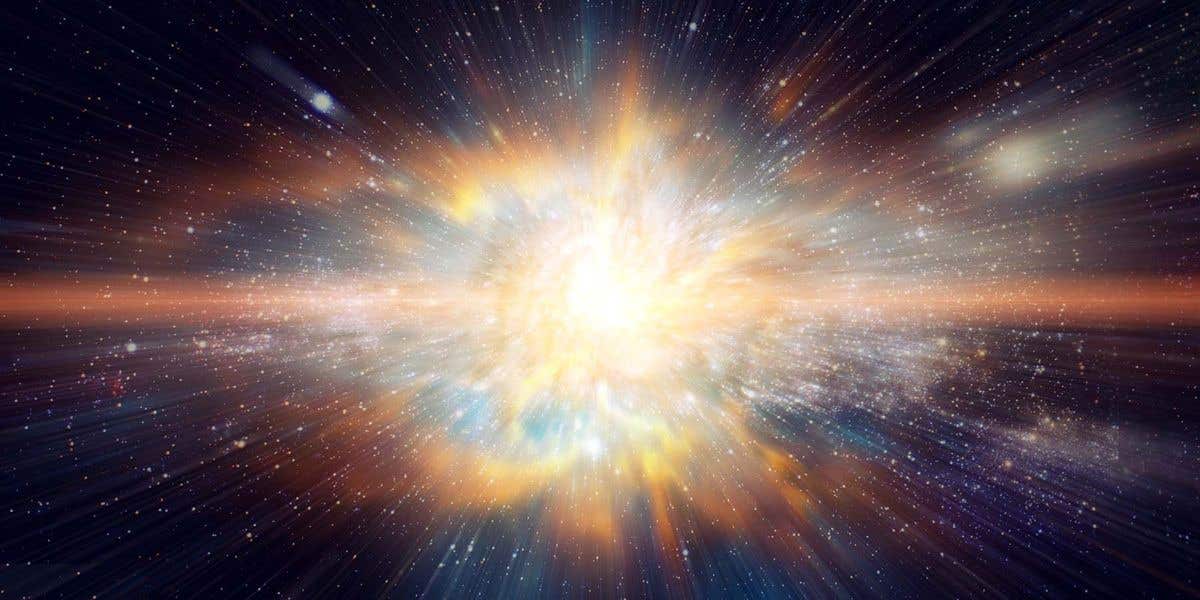White dwarf duo reveals the origins of the universe’s brightest explosions
Astronomers find a rare nearby star pair that will explode in a supernova, helping solve a major cosmic mystery.

A rare binary white dwarf system just 150 light-years away will explode in a supernova, solving a long-standing astrophysics puzzle. (CREDIT: Nature Astronomy)
Astronomers have found a remarkable pair of stars that may finally prove a long-debated theory. Described in the journal Nature Astronomy, this duo offers the strongest evidence yet that type 1a supernovae—the universe's brilliant explosions used to measure cosmic distances—can come from two white dwarfs. These dying stars orbit so closely they spiral inward over time, eventually colliding with enough force to trigger a spectacular blast.
Astronomers at the University of Warwick say this discovery gives rare insight into how these supernovae are born. "We’ve suspected this for decades," one astronomer noted. "But this is the clearest case we’ve ever seen." These explosions help chart the growth of the universe, so understanding their origin changes how scientists measure space and time.
The system, known as WDJ181058.67+311940.94, is unlike any ever observed. It's composed of two white dwarfs – the dense cores left behind after stars like our Sun die. What makes this system unique is its high mass and compact orbit. With a total mass of 1.56 times that of the Sun, these stars are too heavy to survive forever.
The two stars are separated by just 1/60th of the distance between the Earth and the Sun. Right now, they circle each other every 14 hours. Over the next 23 billion years, gravitational wave radiation will slowly pull them together. In their final moments, they will whip around each other in just 30 to 40 seconds before detonating.
James Munday, the PhD researcher who led the discovery, explained the excitement. “For years a local and massive double white dwarf binary has been anticipated. When I first spotted this system with a very high total mass on our Galactic doorstep, I was immediately excited.”
The find confirms long-held theories that many type 1a supernovae arise from white dwarf pairs. Until now, no one had ever observed a nearby system destined to explode within a Hubble time (the age of the universe, about 13.8 billion years). "We had discovered the first double white dwarf binary that will undoubtedly lead to a type 1a supernova," Munday said.
Type 1a supernovae are powerful explosions that shine with remarkable consistency. Because of this, they are used as "standard candles" to measure cosmic distances. But their origins have been a mystery. Scientists believe they are caused when a white dwarf gains too much mass from a companion and explodes. However, it was unclear what type of star provided the extra mass.
Related Stories
In this case, both stars are white dwarfs, supporting the idea that these duos may be a primary source of type 1a events. "This is a very significant discovery," said Dr. Ingrid Pelisoli, another researcher on the team. "Finding such a system on our galactic doorstep is an indication that they must be relatively common. Otherwise, we would have needed to look much further away to encounter them."
She added, "Our survey is still ongoing, and we expect more exciting discoveries in the future. Little by little, we are getting closer to solving the mystery of the origin of type 1a explosions."
In 23 billion years, this system will go out with a bang. As mass flows from one dwarf to the other, the surface of the gaining star will ignite first. That blast will trigger a second explosion in its core. Ejected material will smash into the other white dwarf, setting off a third and fourth explosion. This rare chain reaction is called a quadruple detonation.
The energy released will be enormous – a thousand trillion trillion times greater than the most powerful nuclear bomb. The explosion will tear both stars apart and send their remains flying through the galaxy. The event will create a bright flash in the night sky, outshining even the full moon and appearing 200,000 times brighter than Jupiter.
But don’t worry. The explosion won’t be harmful to life on Earth. It’s far enough away, and the timeline gives humanity plenty of notice.
The binary system is especially valuable because it helps resolve a long-standing problem in astrophysics. Scientists predicted that there should be many systems like this in our galactic neighborhood. But surveys hadn’t found them. Until now.
Current models suggest about 150 similar double white dwarfs exceeding 1.5 solar masses exist within 100 parsecs (roughly 326 light-years) of Earth. About one-quarter of these are expected to merge within a Hubble time. Despite this, only one such system had previously been confirmed – and that one won’t explode for over 130 billion years.
This new system is different. Not only is it closer, but it will also go supernova in about 23 billion years, roughly twice the age of the current universe. That makes it the first known white dwarf pair with enough mass and a short enough timescale to confirm the theory.
The team used some of the world's largest telescopes to confirm their find. Instruments on the William Herschel Telescope, the Isaac Newton Telescope, and the Very Large Telescope provided time-series spectroscopy. These detailed observations confirmed the mass, orbit, and future evolution of the system.
Data from the Hubble Space Telescope was also analyzed. Two separate stars were confirmed using ultraviolet and visible light spectra, ensuring that the masses were accurately measured. The heavier of the two dwarfs weighs about 0.83 times the mass of the Sun. Its partner weighs about 0.72 solar masses.
Together, they surpass the Chandrasekhar limit of 1.4 solar masses – the threshold where white dwarfs become unstable and are likely to explode. The new system clocks in at 1.555 ± 0.044 solar masses.
The observed birth rate of such heavy white dwarf pairs is estimated at 6.0 × 10^-4 per year. However, the number of type 1a supernovae these systems cause is only about 4.4 × 10^-5 per year. That’s still far lower than the total supernova rate across the Milky Way, which is about 2.8 × 10^-3 per year.
This means that while this discovery fills in part of the missing data, more systems need to be found to fully explain all type 1a supernovae. Still, this is a major step forward.
Knowing where type 1a supernovae come from is important not just for understanding stars, but for measuring the size and shape of the universe. These explosions are used to calculate distances to faraway galaxies. If astronomers don’t fully understand what causes them, their measurements could be off.
This affects research on dark energy, galaxy expansion, and star formation. Accurate models of supernova origins reduce uncertainty in those areas.
The new discovery helps ground those measurements in real observations. It shows that massive, close white dwarf pairs do exist nearby, and some of them are on track to explode within a meaningful timescale.
It also points to future research. The team is still searching for more systems like this. Every new discovery makes the picture clearer and improves our grasp of one of astronomy’s most powerful tools.
Until now, the story of type 1a supernovae was missing a key character. With this rare find so close to home, the mystery is a little less mysterious.
Note: The article above provided above by The Brighter Side of News.
Like these kind of feel good stories? Get The Brighter Side of News' newsletter.



